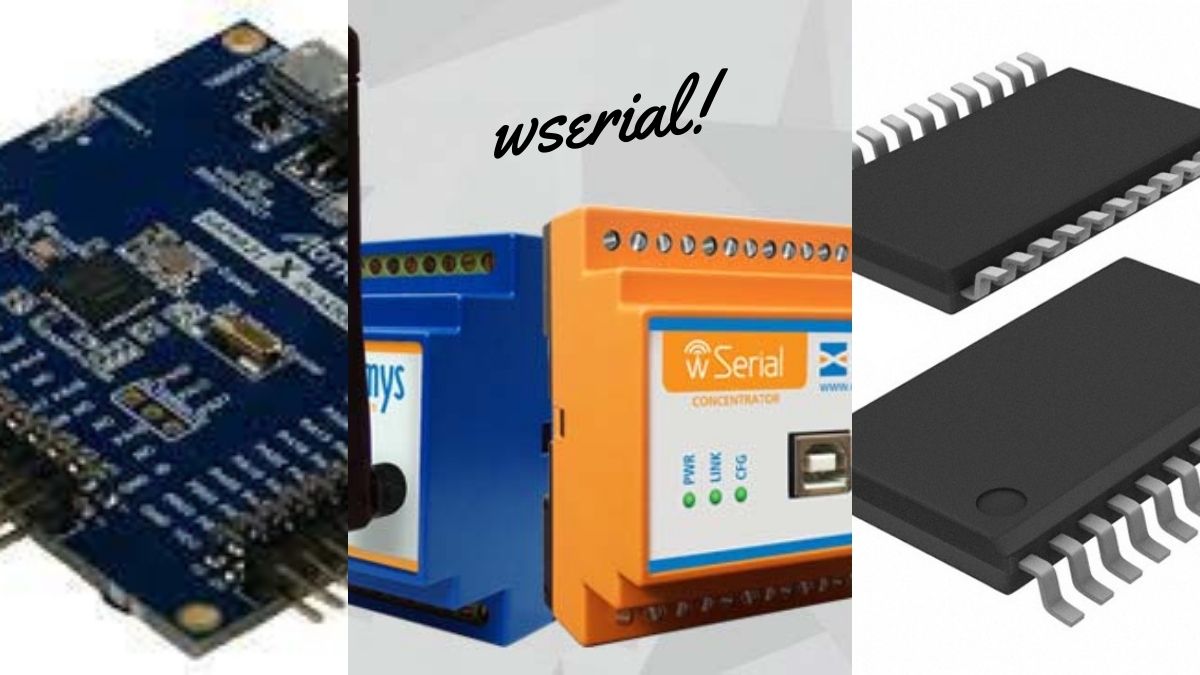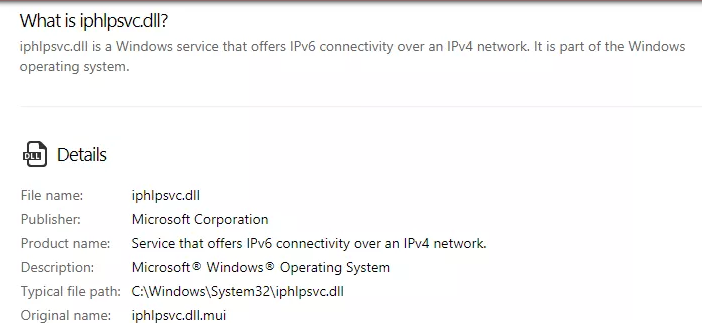Technology
Best Online Fax Services Compared and Reviewed (2021)

Faxing used to be a big deal for people who worked in offices or government agencies because it was a visible way to communicate. CocoFax was widely used because it was simple to use and provided many benefits.

Fax has its uses, even though it is no longer used as a primary communication mode or information transfer. The security of mail or social media, for example, is always at risk, so it’s best to use something as safe as fax. Without further ado, let’s learn more about fax from computer.
Overview of CocoFax
CocoFax is one of the world’s most popular free online fax services. CocoFax works with any device with an internet connection to send and receive faxes. There is no need for a fax machine, a phone line, or any other extra hardware. While you fax over the internet, the recipient will receive faxes on their fax machine and not be aware of the difference.
How Does It Work?
An app’s architecture is a crucial factor in determining whether it is worthwhile to use or not. Let’s take a look at CocoFax’s interface and how it sends and receives faxes for you.
Fax Using a Web Browser
First, let’s look at how to send and receive faxes using CocoFax’s web browser:
Using a Web Browser to Send Faxes
Step 1: Register for a CocoFax account to receive a 30-day free trial. CocoFax also allows us to create your fax number from a list of options during the signup process.

Step 2: After registering for a CocoFax account, you will be guided to your dashboard. Alternatively, you can access your CocoFax dashboard via the website at any time. Various CocoFax tabs and features can be found on your web dashboard.

To send new fax, go to the dashboard’s corner and press the ‘Send Fax’ button. A popup window will appear, allowing you to create new fax.
Step 3: In this new fax popup window, you’ll write your fax. Fill in the following fields:
- You can directly type the recipient’s fax number in the ‘To’ textbox.
- You can add a note to the text if you like. On the receiver’s end, this note will appear on top of the fax document.
- The cover page area is also optional. This text box becomes the first page of the receiver’s text document if you type anything in it. You have the option of leaving this field blank.
- The most crucial step is to insert the fax document. You can use your computer or the cloud to upload a paper. CSV, Doc, Docx, Xls, xlsx, png, and jpg are among the formats supported by CocoFax.

After you’ve finished drafting the fax, double-check all of the details before pressing the ‘Send’ button. CocoFax will submit your fax to the recipient as soon as possible. You will get a delivery notification when the recipient receives your fax. Even if your fax were not sent, you would receive notice.
Faxes Received via Web Browser
It’s easy to receive faxes on your CocoFax web dashboard. You can share your free fax number with anyone you like once CocoFax has assigned it to you. If you receive a fax at this fax number, CocoFax will deliver it to your CocoFax dashboard right away. In the ‘Inbox’ tab of your dashboard, you can search your received faxes at any time.
Email-based Faxing
The email to fax feature in CocoFax is one of the best and most common. It allows you to fax from any email client. To use it, follow these steps:
Step 1: Sign up for a CocoFax account and take advantage of their 30-day free trial. You’ll be able to pick your fax number. Make sure you’ve entered the correct email address for sending and receiving faxes.
Step 2: Open your phone’s or computer’s email client. To make a new email, select the option. The new email window will appear. You’ll write your new fax here, and it’ll look a lot like sending an email.

Step 3: In the ‘To’ area, instead of typing the recipient’s email address, type their fax number followed by ‘@cocofax.com.’ Anything you type in the subject field will appear as a note on top of the fax folder. If you prefer, you can leave this field blank.
Anything you type in the email body will be used as the fax document’s cover tab. The receiver will see this page as the first page of the fax. You have the option of leaving this field blank as well.
Finally, with this email, you can attach the fax document. You may also combine different papers. Make sure the file name doesn’t contain any unique characters.
Step 4: Click the ‘Send’ button once you’ve double-checked all of the details. CocoFax will receive your email and fax it to the intended recipient. You will receive an email notification in your inbox when the recipient gets this fax document successfully. If the fax is not transmitted successfully, you will be notified.
Fax to Email for Receiving Faxes
After you’ve registered your email address with CocoFax, all faxes you receive will be sent directly to your inbox. The received faxes are translated to PDF files and added to the CocoFax email notification. You can then read the incoming fax, print it, or send it directly to others.
Whatever method you use to send or receive faxes with CocoFax, you will notice no problematic or complicated steps involved. As a result, CocoFax also gets a thumbs up in this regard.
Unique Key Features of CocoFax
CocoFax has many exclusive features that you won’t find anywhere else. These features are one of the main reasons for CocoFax’s popularity as opposed to its competitors.
The following are some of the unique features:
- Reports on Delivery
You will receive a delivery confirmation for each fax you send if you use CocoFax. Notifications are sent to you by email and via CocoFax’s web dashboard. You’ll know whether the fax was delivered successfully or not. Other relevant information can also be found in these delivery reports.

- Faxing Photos
CocoFax allows you to submit and receive fax documents. You don’t need to learn any additional magic to present the image file with CocoFax. You can also receive images.
- Email to fax
In the area of fax, the email to fax technology is a revolution. CocoFax now allows you to send faxes directly from your email. Faxes can also be sent to your email inbox. It’s close to sending and receiving emails, except it’s a lot more convenient.

- There is no need to download an app.
The requirement to install an app on each computer often renders the procedure ineffective. As a result, the online dashboard of CocoFax gives you unrivaled accessibility. This web dashboard allows you to send and receive faxes from any computer without downloading any software.
Conclusion:
Coco Fax is an excellent service that can be used for all of your faxing needs and can provide you with all types of wireless fax transmission. All you need is a reliable internet connection to complete all of your faxing tasks.
Furthermore, they offer a free 30-day trial that allows you to try out all of their services for a month. This is the first time faxing has ever been this cool!
Technology
GoogleMcom: Revolutionizing Online Search

GoogleMcom search engines like Google have become indispensable in the modern day. Search engines are vital tools for navigating the web and finding what you need a new player in the search engine industry, is making waves with its ground-breaking strategies.
The Importance of GoogleMcom
Stands out from the competition because of its focus on the user, which manifests itself in highly customised search results. It takes into account the complexity of user requirements and the rapid pace of current life to help users quickly locate the information they need.
How to Use GoogleMcom
It’s easy to navigate you may use a web browser or the app to get to it. Just type your question into the search box once you get to and its sophisticated algorithms will do the rest.
GoogleMcom Features and Benefits
There are several advantages to using as opposed to other search engines. Among its many remarkable characteristics are:
Personalization:
Over time learns from your search history and preferences to provide you better results.
Voice Search:
The ability to do searches using voice commands is a handy feature.
Search Filter:
Filters allow you to quickly refine your search and discover exactly what you’re searching for.
The Evolution of GoogleMcom
Since its beginning has experienced rapid expansion. Once an innovative concept with game-changing potential, it’s now a robust search engine with constantly evolving algorithms.
GoogleMcom vs. Other Search Engines
When compared to Google, Bing, and Yahoo is far superior in terms of customization and speed. It’s built to learn your preferences and provide up relevant outcomes, which potentially revolutionise the search engine industry.
Tips for Optimizing Your GoogleMcom Experience
Follow these suggestions to get the most out:
Use Specific Keywords:
If you want more precise results from your searches, you should use clear and explicit language.
Explore Filters:
Try out the many search options to find the one that best suits your needs.
Bookmark Your Favorites:
Make rapid access to your favourite sites by saving them.
The Future of GoogleMcom
The road ahead for a long as the technology behind online search continues to evolve, it will become more user-friendly and efficient. Always adapting to new technologies.
GoogleMcom for Businesses
Advantages include the potential for more targeted marketing campaigns and deeper connections with existing customers powerful resource for businesses trying to expand their internet visibility.
Security and Privacy on GoogleMcom
These concerns are taken very seriously by the platform takes the security of your data and online activity very seriously.
Conclusion
Changing the way people search for information on the web poised to become an important player in defining the future of internet search as technology continues to develop.
FAQ’s
FAQ 1: What is GoogleMcom?
Cutting-edge search engine optimised for speed and precision in its results.
FAQ 2: Is GoogleMcom a Replacement for Google.com?
It’s a novel way to conduct web research.
FAQ 3: How Can I Download GoogleMcom?
Available for download from the appropriate website or app store. You may use it on a desktop computer or a mobile phone.
FAQ 4: Can I Customize GoogleMcom?
Yes, you can customize to a certain extent. You can set preferences and filters to tailor your search results to your liking.
FAQ 5: Is GoogleMcom Available on Mobile?
Mobile phone users may access On-the-go, specialised searches are now possible with this programme.
Technology
Exploring wserial: Your Ultimate Entertainment Destination

wserial it comes to the ever-changing landscape of internet streaming is a genuine game-changer. This service’s extensive catalog of shows and movies, along with its seamless interface, has completely transformed the media consumption landscape. This essay will provide a comprehensive look into exploring its history, features, benefits, and competitive advantages.
The Evolution of wserial
Early Beginnings and Development
Began as a simple project with the intention of creating a centralized database for media. Since its origin, it has gone a long way, evolving to meet the needs of today’s viewers.
Impact on the Entertainment Industry
The platform has revolutionized the entertainment business by changing how material is distributed to consumers. It has grown into a streaming industry giant, with significant sway over competing services.
Key Features of wserial
User-Friendly Interface
The straightforwardness and ease of use of interface is a major selling point. Users of all ages will appreciate the platform’s user-friendliness and the simplicity with which they may access their preferred media.
Extensive Library of Content
Large collection of movies and TV shows available to watch online. Everyone may find something they like, from old favorites to very new releases. It’s like heaven on earth for movie and TV buffs.
Availability on Multiple Devices
Used with several gadgets. It’s compatible with mobile devices, tablets, and even smart TVs. This adaptability puts fun within easy grasp whenever you need it.
Subscription Options
Provides flexible subscription options to meet your specific requirements. There’s a plan for everyone, whether you want commercial-free streaming or need to stick to a strict budget.
How to Access wserial
Step-by-Step Guide on Getting Started
Using for the first time is straightforward. To ensure a smooth entry into the community, we will guide you through the necessary processes.
Compatible Devices and Platforms
Find out what hardware and software are compatible so you may enjoy your media anywhere you choose.
Content Categories on wserial
Overview of Available Genres
Action, drama, comedy, and even fantasy may all be found on Wserial. You can always find something new and exciting to do to pass the time.
Popular TV Series and Movies
Learn about some of most well-liked shows and films. You may discover your new favorite show to watch nonstop.
Benefits of Using wserial
Convenience and Flexibility
You can watch your favorite episodes and movies whenever you want with making it more convenient than ever before.
Cost-Effectiveness
Wserial is less expensive than standard cable TV. There are a variety of membership tiers available, so you can choose one that fits your budget.
No Ads and High-Quality Streaming
Put an end to buffering and poor audio/video quality. Guarantees a high-definition, uninterrupted viewing experience.
wserial vs. Competitors
A Comparison with Other Streaming Platforms
We’ll look at wserial in comparison to other popular streaming services so you can see how it stands out.
Unique Selling Points
Learn what makes stand out from the crowd and how you may benefit from using it.
User Experience and Reviews
Testimonials from Satisfied Users
Hear firsthand accounts from happy users about their time using the service.
Ratings and Feedback
Look into what previous customers have said about the service by reading their reviews and ratings.
The Future of wserial
Upcoming Features Improvements
Learn about the exciting new features and anticipated updates coming to the near future.
Expanding the Content Library
Learn about the exciting new features and anticipated updates coming to the near future.
How wserial Aces SEO
SEO Strategies Employed by wserial
Find out how wserial achieves its high search engine rankings and what techniques are used for search engine optimization.
Conclusion
To sum up, wserial is a game-changer in the entertainment industry, not just another streaming service. It’s a must-try for anybody hoping to improve their entertainment experience due to its large collection, user-friendly design, and dedication to high-quality streaming. With you’re in for a ride full of nonstop fun.
FAQ’s
How can I subscribe to wserial?
- Wserial has a simple subscription process. You may pick the best plan for your needs right from the website.
Can I watch wserial on my smartphone?
- Smartphones and other devices are supported by wserial.
Are there regional restrictions on content?
- Due to licensing agreements, certain content may be region-locked, however still provides a vast selection of worldwide content.
Does wserial offer offline viewing?
- If you have a paid membership, you may save videos to watch later.
What sets apart from other streaming platforms?
- Wserial stands out because to its attractive interface, large library, and low membership prices.
Technology
Exploring the World of Slinguri

Slinguri has gained currency and significance in a society where adaptability and power are paramount. These clever implements have matured into dependable options for many different jobs. In this article, we’ll investigate in detail, looking into their origins, varieties, applications, and widespread impact throughout industries.
What Are Slinguri?
Strong straps known as (or “sling-oo-ree”) are often crafted from nylon or polyester. These straps are built to last and can be adjusted to fit any need come in a wide range of lengths and have many different uses because to their special properties.
The History of Slinguri
Slinguri’s roots are intricately entwined with the development of human engineering and ingenuity. Ancient peoples relied on crude slings to carry around huge loads. The contemporary developed from these original slings over time to satisfy the needs of certain industries.
Types of Slinguri
There are several varieties of each one designed for a certain task. Some typical :
- H3: Round Slinguri
- H3: Webbing Slinguri
- H3: Wire Rope Slinguri
- H3: Chain Slinguri
Every kind serves a particular purpose and offers its own set of benefits, hence their use varies widely.
How to Use Slinguri
Knowledge and skill are essential for effective slinguri use. Knowing the proper application is critical for the safety and efficiency of any task involving the fastening of a load, the lifting of heavy equipment, or the towing of a vehicle. We’ll go into the fundamentals of use in a range of contexts.
Slinguri’s Versatility
Amazing because of how many different uses there are for them. Useful to them are:H3: Construction
- H3: Warehousing
- H3: Transportation
- H3: Manufacturing
Slinguri for Outdoor Enthusiasts
Also a must-have for any outdoor lover.Useful items for securing equipment and maintaining safety when camping, trekking, or participating in adventure sports.
Slinguri for Industrial Use
Commonly used to hoist and transport large machines and equipment in industrial situations. They offer a dependable method for safeguarding the security and efficacy of production and building processes.
Slinguri in Everyday Life
Commonly used to hoist and transport large machines and equipment in industrial situations. They offer a dependable method for safeguarding the security and efficacy of production and building processes.
Safety Precautions
Using responsibly is of the utmost importance. We’ll go through some basic safety measures to take when handling these potent instruments so that nobody gets hurt.
Maintenance and Care
Maintenance and upkeep are crucial to the performance and durability Find out what you can do to make sure your lasts as long as possible.
Where to Buy Slinguri
To help you get the most out of your money if you’re looking to buy we’ll give you some pointers on where to get the highest quality.
Slinguri: A Sustainable Choice
Contributing to the increased focus on sustainability.
Pop Culture
Slinguri have left their imprint on mainstream media, including cameos in movies, TV series, and music videos. We’ll look at a few cases where really stole the show in the realm of entertainment.
Conclusion
To sum up are robust and multipurpose instruments that have found their way into many facets of human life. Provide a practical option for a wide variety of uses, from the workplace to outdoor activities and daily chores. They will do you good and help the future if you take the time to learn about them and treat them with respect.
FAQ’s
FAQ 1: Are slinguri only used in industrial settings?
In reality, it’s possible to apply to a wide variety of fields, pastimes, and professions.
FAQ 2: How do I know which type of choose for my specific needs?
Depending on your needs, select when choosing the right kind, you should think about things like load capacity, environmental issues, and safety laws.
FAQ 3: Are slinguri environmentally friendly?
The fact that many are built to last makes them preferable from an environmental standpoint.
FAQ 4: What safety precautions should I take when using?
To avoid injuries, it’s important to always check your before use and to instruct anybody who could use it.
FAQ 5: Where can I purchase high-quality?
Reputed vendors are widely available in both online and offline retail outlets. When making a purchase, be careful to do it from a reliable vendor.
-

 Marketing1 year ago
Marketing1 year agoHow Often Should You Publish on a Blog?
-

 Technology1 year ago
Technology1 year agoIPHLPSVC Services Tuning? Windows 7/10
-

 Technology1 year ago
Technology1 year agoHow AI Can Transform Healthcare
-

 REVIEWS1 year ago
REVIEWS1 year agoBest Gaming Communities Like F95zone
-

 OUTDOOR1 year ago
OUTDOOR1 year agoColoring Black and White Photo at Home
-

 Technology1 year ago
Technology1 year ago5 Best React JS UI Frameworks for Swift Prototyping
-

 REVIEWS1 year ago
REVIEWS1 year agoAll You Need to Know About KissAnime – Is it Safe and Legal?
-

 GAMING1 year ago
GAMING1 year agoPick N Mix: A Slots Adventure for Everyone
